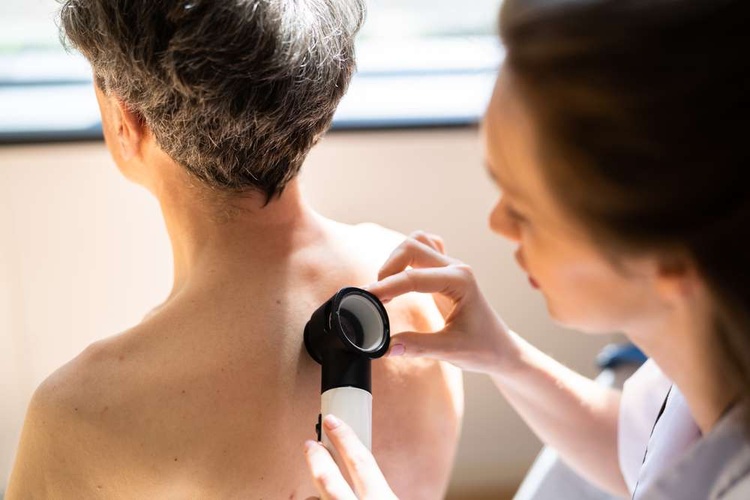Atopic Dermatitis in the U.S. (2025): Early Signs You Shouldn’t Ignore
Atopic dermatitis, commonly known as eczema, affects millions of Americans each year. This chronic inflammatory skin condition can appear at any age but often begins in childhood. Recognizing the early warning signs is crucial for managing symptoms effectively and preventing flare-ups. Many people dismiss initial symptoms as simple dry skin or temporary irritation, but understanding what to watch for can lead to earlier intervention and better long-term outcomes for skin health.

Atopic dermatitis represents one of the most common chronic skin conditions in the United States, impacting approximately 16.5 million adults and 9.6 million children nationwide. This inflammatory disorder goes beyond occasional dry patches, often causing significant discomfort and affecting quality of life. While the condition cannot be cured, early recognition and proper management can dramatically reduce symptom severity and frequency of flare-ups. Understanding the early indicators helps individuals seek appropriate care before the condition worsens or leads to complications such as skin infections or sleep disturbances.
What Are the First Signs of Atopic Dermatitis?
The initial symptoms of atopic dermatitis typically manifest as patches of dry, itchy skin that may appear red or brownish-gray depending on skin tone. In infants, these patches commonly develop on the cheeks, scalp, and outer arms or legs. Adults more frequently experience symptoms on the hands, feet, ankles, wrists, neck, upper chest, eyelids, and inside the bend of elbows and knees. The itching often intensifies at night, potentially disrupting sleep patterns. The skin may also become thickened, cracked, or scaly over time, and small raised bumps may leak fluid when scratched. These early manifestations distinguish atopic dermatitis from other skin conditions and warrant medical evaluation for proper diagnosis.
Hidden Symptoms Many Americans Overlook
Beyond visible skin changes, atopic dermatitis presents several subtle signs that people frequently dismiss or attribute to other causes. Many individuals experience persistent skin sensitivity to certain fabrics, soaps, or environmental factors without recognizing this as part of the condition. Increased susceptibility to skin infections, including bacterial, viral, or fungal infections, often goes unnoticed as a related symptom. Some people develop darkened skin around the eyes or experience chronic chapped lips. Changes in skin texture, such as areas that feel rough or leathery even when moisturized, may indicate developing atopic dermatitis. Additionally, many Americans overlook the connection between their skin symptoms and other atopic conditions like hay fever or asthma, which frequently coexist with atopic dermatitis. Recognizing these hidden indicators allows for more comprehensive treatment approaches.
When to Seek Medical Attention
Consulting a healthcare provider becomes essential when skin symptoms interfere with daily activities, sleep, or cause significant discomfort. Immediate medical attention is warranted if the affected skin shows signs of infection, such as increased warmth, swelling, pus-filled blisters, or red streaks extending from the affected area. Fever accompanying skin symptoms may indicate a serious infection requiring prompt treatment. Individuals should also seek professional evaluation when over-the-counter moisturizers and anti-itch creams fail to provide relief after one to two weeks of consistent use. If symptoms appear suddenly and severely, or if skin changes spread rapidly across the body, medical assessment helps rule out other conditions and establishes an appropriate treatment plan. Parents should consult pediatricians when infants or young children develop persistent rashes, especially if accompanied by irritability or feeding difficulties.
Why Atopic Dermatitis Is Rising in the United States
The prevalence of atopic dermatitis has increased significantly in recent decades, with rates doubling or tripling in industrialized nations including the United States. Multiple factors contribute to this rise, including environmental changes, lifestyle modifications, and increased awareness leading to better diagnosis. The hygiene hypothesis suggests that reduced childhood exposure to certain microorganisms may affect immune system development, potentially increasing susceptibility to atopic conditions. Urban living environments with higher pollution levels, decreased humidity from climate control systems, and greater exposure to chemical irritants in household products all contribute to rising rates. Dietary changes, including increased consumption of processed foods and decreased intake of omega-3 fatty acids, may also play a role. Additionally, stress levels, which have risen significantly among Americans in recent years, can trigger or worsen atopic dermatitis symptoms. Climate change affecting temperature and humidity patterns further impacts skin barrier function, potentially explaining geographical variations in prevalence.
Modern Treatments Available in the U.S.
Treatment options for atopic dermatitis have expanded considerably in recent years, offering Americans more effective management strategies than ever before. Topical corticosteroids remain a cornerstone treatment for reducing inflammation during flare-ups, with various strengths available for different body areas and severity levels. Non-steroidal topical medications, including calcineurin inhibitors like tacrolimus and pimecrolimus, provide alternatives for sensitive skin areas. For moderate to severe cases, newer biologic medications such as dupilumab target specific immune system pathways involved in atopic dermatitis, offering significant relief for patients who do not respond adequately to topical treatments. JAK inhibitors represent another recent advancement, available in both oral and topical formulations. Phototherapy using controlled ultraviolet light exposure benefits some patients, particularly those with widespread involvement. Comprehensive treatment plans typically include consistent moisturization routines, identification and avoidance of triggers, and strategies for managing stress. Many dermatologists now emphasize personalized treatment approaches, considering individual symptom patterns, lifestyle factors, and treatment preferences to optimize outcomes.
Successful management of atopic dermatitis requires ongoing commitment to skin care routines and regular communication with healthcare providers. While the condition presents challenges, advances in understanding its underlying mechanisms continue to drive development of more targeted and effective treatments. Americans living with atopic dermatitis can achieve significant symptom control and improved quality of life through early recognition, appropriate medical care, and consistent implementation of management strategies tailored to their specific needs.
This article is for informational purposes only and should not be considered medical advice. Please consult a qualified healthcare professional for personalized guidance and treatment.




